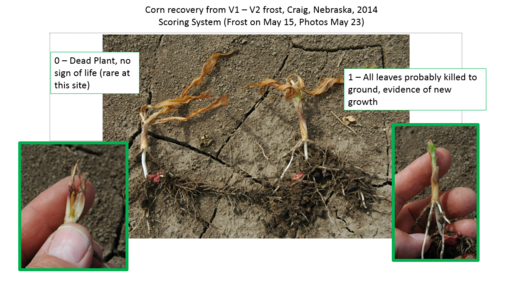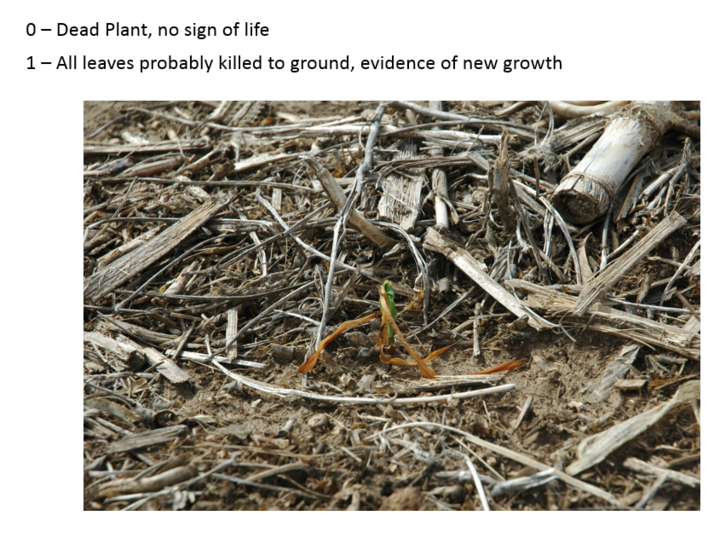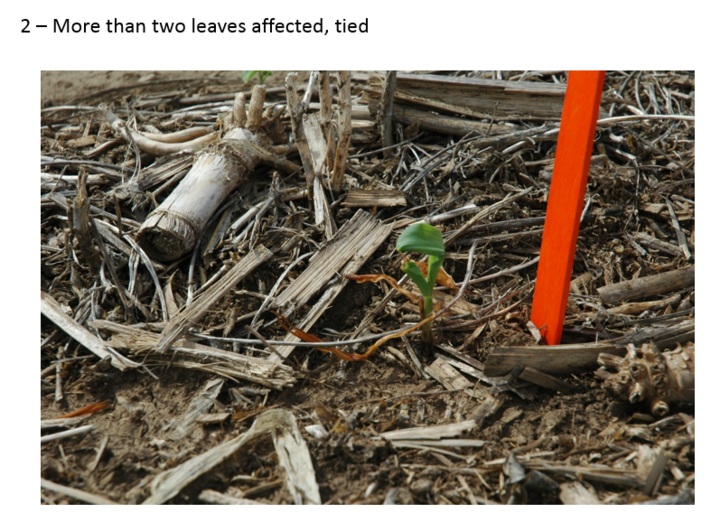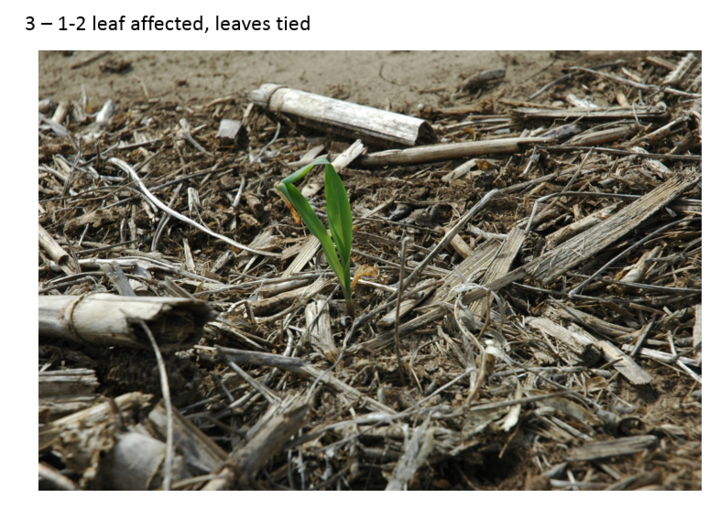Freeze conditions likely occurred in some of Nebraska’s corn growing area this morning. If the conditions were intense enough to actually freeze the soil down to the germinated seed, mesocotyl/coleptile, resulting stands and yields may be compromised. It takes from 90 to 120 GDD for corn to emerge. That means that corn planted any time before April 25 at North Platte, should be emerged or close to it. Using the resources mentioned in another CropWatch article will help you make decisions after the crop has had a chance to emerge.
“Will Frost Affect Emerged Corn?”
The text book answer to this is no. For example, if corn was planted on April 10 at North Platte, it would likely be just past the one-leaf stage (based on GDD accumulation – see the U2U GDD tool). Corn growing points are well below ground at that development stage. In fact growing points are below ground until the 6th leaf stage. So, if soil temperatures are above freezing, seedling growing points should be protected. But, other factors may come into play that you need to be aware of regarding corn recovery from early-season frost.
Post-Freeze Weather Conditions Are Critical
McMechan and Elmore discussed these other factors in their April 28, 2017 CropWatch article. As they mentioned, weather conditions that follow the frost event are critical in the recovery process, assuming seedling growing points were not damaged. This story summarizes that concern:
"Regrowth of corn following freeze damage is often impeded by dead leaf tissue that can entrap new leaves; this leads to abnormal growth commonly known as “buggy whipping.” Plants significantly impacted by frost may experience delayed silking by 7 to 10 days … If conditions following the frost continue wet and cool – as forecasted [in late-April 2017], plants may die from bacterial soft rot infections reducing plant stands. (McMechan and Elmore. 2017)
That was written in late April 2017. The positive situation this year is that although conditions will be cool for the next few days across Nebraska, rain probabilities are minimal and the skies clear, all of which should promote some amount of leaf growth. The worst case scenario after an early-season frost is a period of cool-wet weather. Sunny conditions in the forecast are a huge advantage."
No matter when you planted corn, walk your fields and assess stands. Check the viability of emerged and emerging seedlings. Assess stands and calculate potential yields.
-
The following series of photos illustrates a rating system used to assess freeze damage to seedling corn. Photos were taken May 23, 2014 near Craig, following a May 15 frost on corn at V1-V2 stage. (Photos by Roger Elmore)
-
-
- 4





